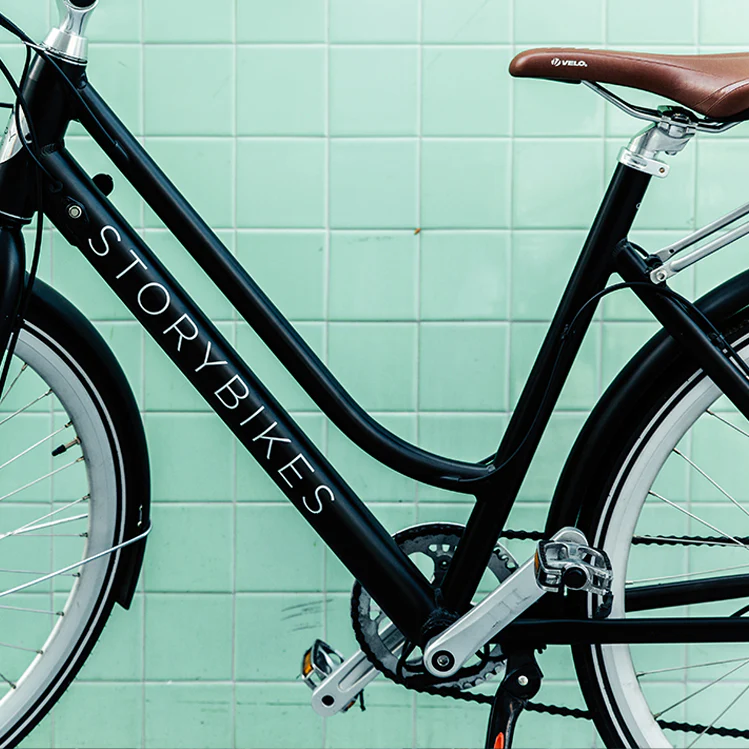
One of the first questions new e-bike owners ask is, “How far can I ride between charges?†While calculating battery capacity can give you a rough idea of how many miles you can go before needing to recharge, it’s by far not the only factor in determining your bike’s range. While having a high-quality battery is important for an optimal ride, how you use your battery is just as crucial as its size.
In other words, a bigger battery isn’t always the best option.
If you’re confused by battery terminology, don’t worry—you’re not alone. Below, we’ll break down what battery capacity means and how it affects your real-world riding experience.
What Kind of Batteries Do E-Bikes Use?
Over the years, e-bike battery technology has advanced significantly. This progress has made e-bikes more efficient, reliable, and practical as a green alternative to gas-powered vehicles.
The majority of e-bikes today use lithium-ion (Li-ion) batteries, including those from Story Bikes. These batteries have largely replaced older options like lead-acid and nickel-metal hydride batteries due to their versatility, durability, and compatibility with modern e-bike designs. Li-ion batteries are also lightweight and can be easily integrated into the frame of the bike.
Story Bikes are equipped with 36V 7AH Samsung Lithium Ion batteries. They come with a charging unit and A/C adapter that connects directly to the bike. It takes just 3 hours to fully charge the battery from empty to full.
What Do These Terms Mean?
Now that you know the type of battery used, you might wonder what terms like V and AH mean and how they relate to battery performance.
Battery power is measured in volts, amps, and watts. Think of electricity like water flowing through a pipe. Amps represent the volume of water, while volts represent the pressure. When you combine these two, you get the total power, or watts.
Here's a quick breakdown of key terms:
V (Volts) – Volts measure the electrical potential. Higher voltage generally means more power, but it depends on other factors too.
AH (Amp Hours) – Amp hours are like the fuel tank of a car. They tell you how much energy the battery can store.
Watt Hours (Wh) – Watt hours help estimate how long a battery will last. To calculate this, multiply volts by amp hours. For example, a 36V 7AH battery gives you 252Wh.
While these numbers provide a general sense of battery power, they don't tell the whole story. Real-world performance depends on several factors, including the bike's design and how you ride it.
What Else Affects Battery Range?
Your riding style plays a big role in how long your battery lasts. Riding uphill, using higher pedal assist levels, or going at faster speeds all drain the battery quicker than riding on flat terrain at a lower assist level.
Additionally, the type of pedal assist system (PAS) installed on your e-bike can significantly impact battery life. There are two main types: cadence sensing and torque sensing.
Cadence sensing PAS uses magnets and sensors to detect when you're pedaling and provides assistance based on the selected level. However, it's less responsive and efficient compared to torque sensing.
With torque sensing, the motor delivers assistance based on the pressure applied to the pedals. This makes the ride smoother and more efficient, as the battery doesn't waste power when slowing down or going downhill. Torque sensing is newer and more advanced, often resulting in better range with smaller batteries.
We use torque sensing technology in our e-bikes, which offers a more natural, responsive, and enjoyable ride. This means you can travel up to 45 miles depending on the PAS level you choose.
Conclusion
Battery capacity is more complex than just looking at numbers like volts and amp hours. While these indicators give a general idea of power, the actual performance depends heavily on the bike’s design and how you use it.
How you ride matters just as much as battery size. With a well-designed e-bike, even a mid-sized battery can last a long time between charges.
If you're considering an e-bike, check out Story Bikes. We offer a variety of models, including step-through, road, and commuter bikes, all at great prices. Plus, for every bike sold, we donate one to a student in Zimbabwe.
Click here to learn more1.5 inch 38mm wide different length highly visible straps with reinforced edges,
Various models of hooks - For a non-marring hold, protecting your cargo and vehicle
Durable- Ratcheting component adjusts the straps from 1ft. to 16 ft. in length to easily and safely secure cargo
LOAD LIMIT - Safe working load limit of 1,100 lbs / break strength of 3,300 lbs
ERGONOMIC RATCHET HANDLE - With angular grip and a premium release lever for ease of use
Cargo Buckle Straps,Auto Ratchet Straps,Cargo Lashing Belt,Ratchet Tie Down Straps,Boat Trailer Straps
WINNERLIFTING SAFETY EQUIPMENT CO., LTD. , https://www.winnerstrap.com